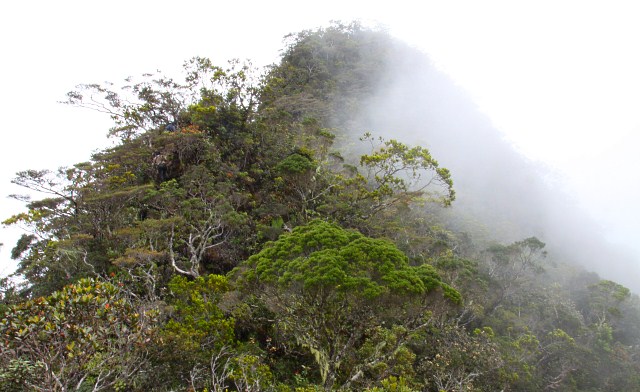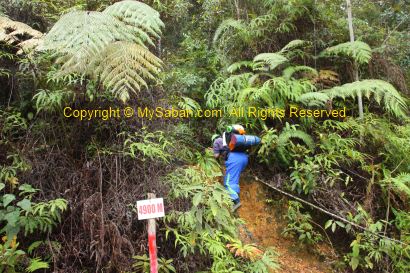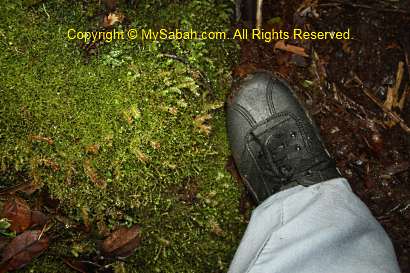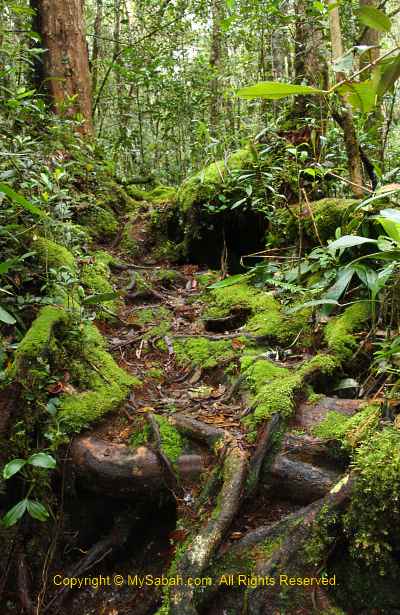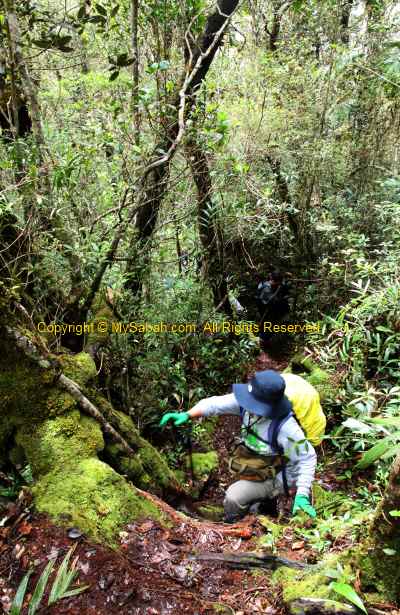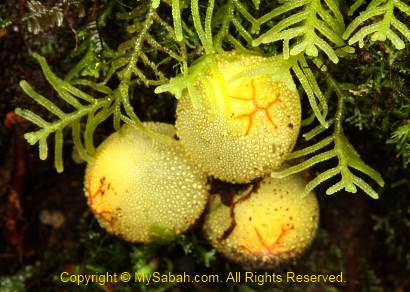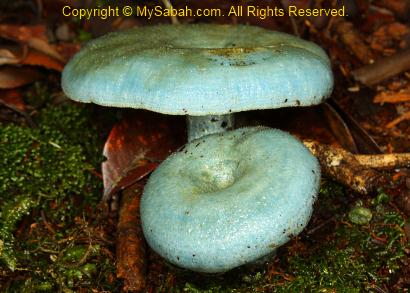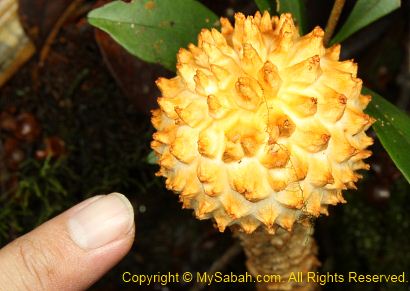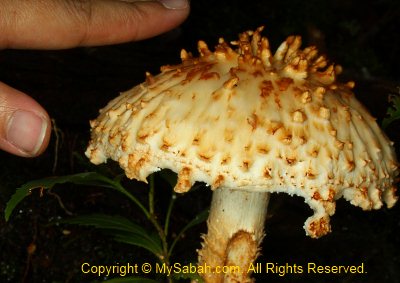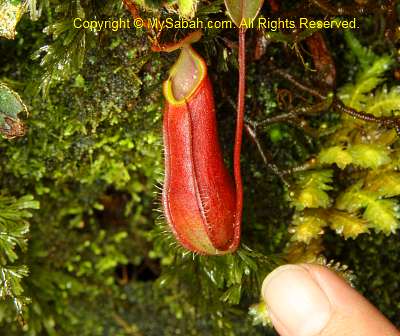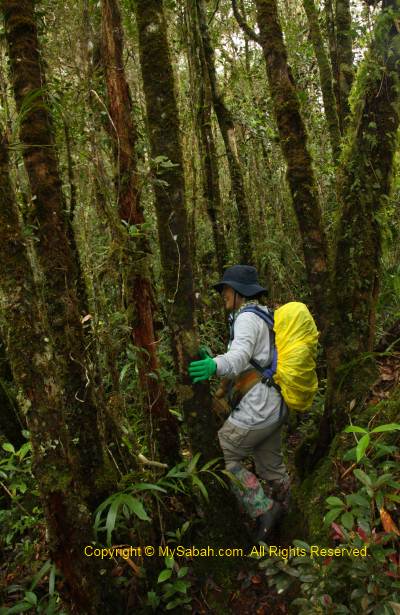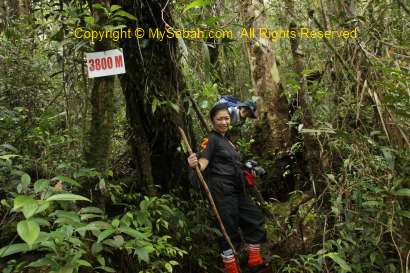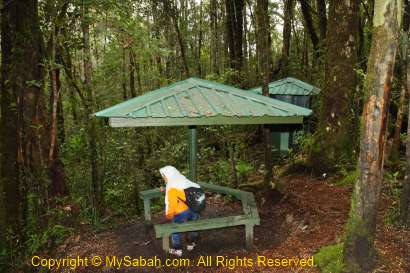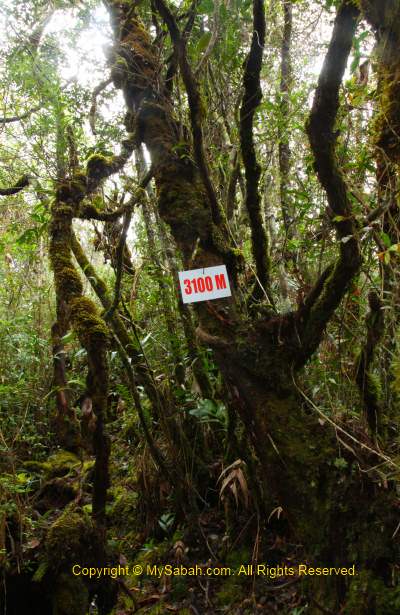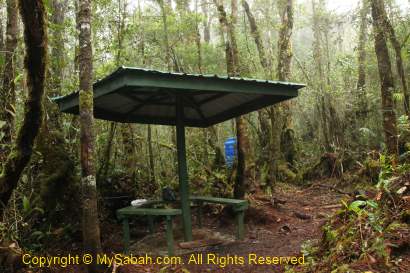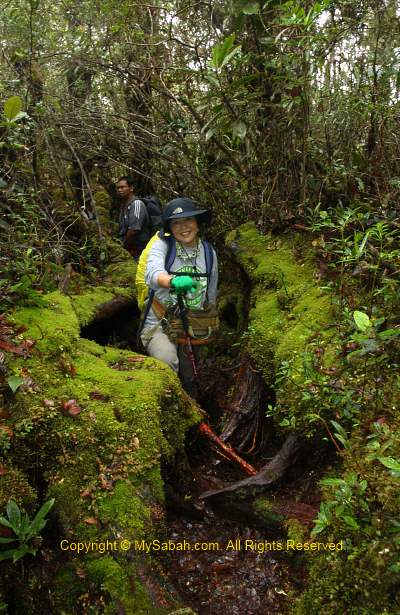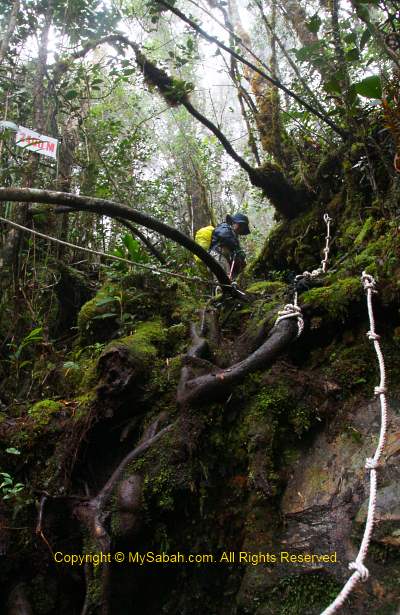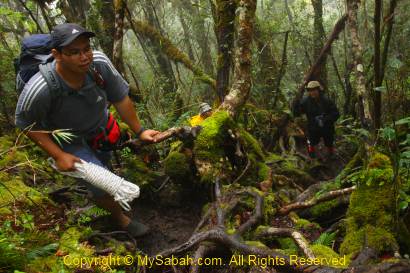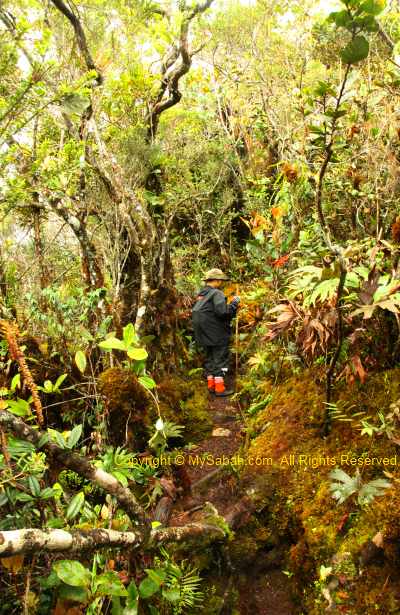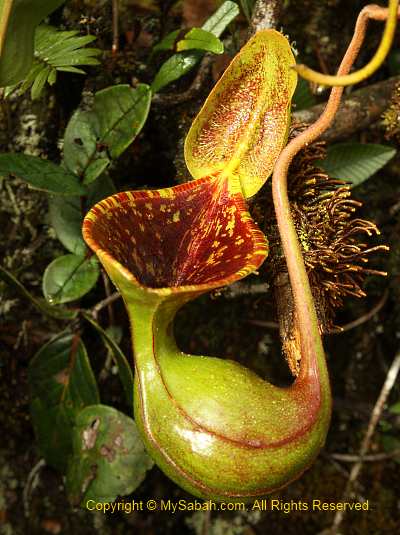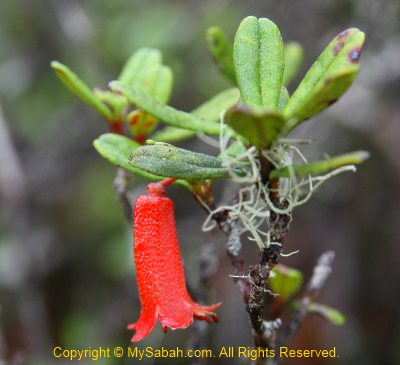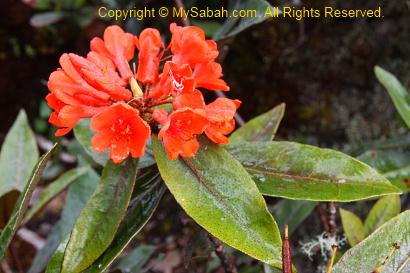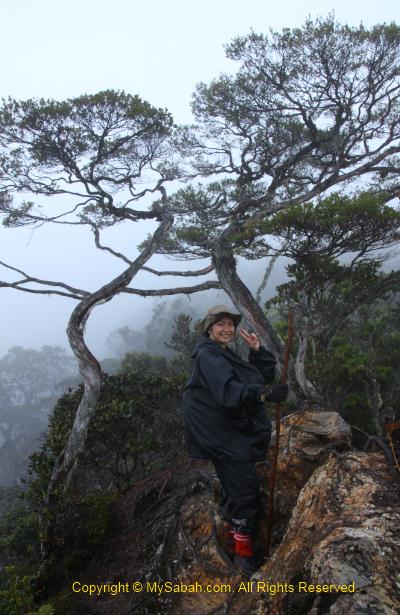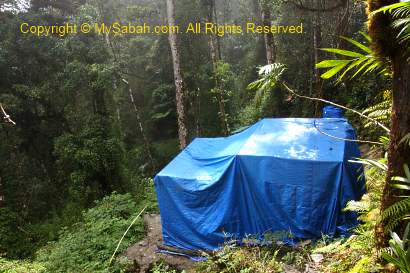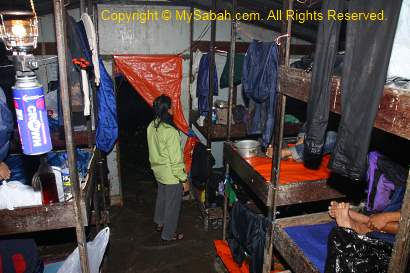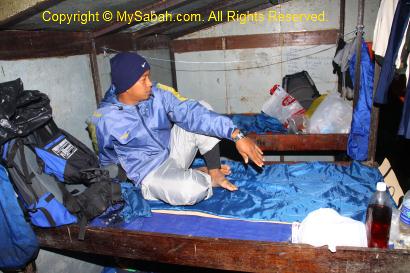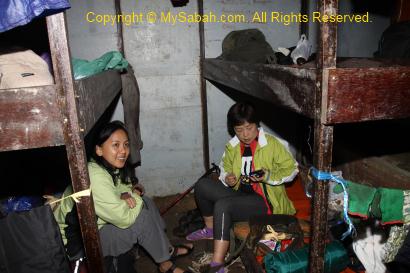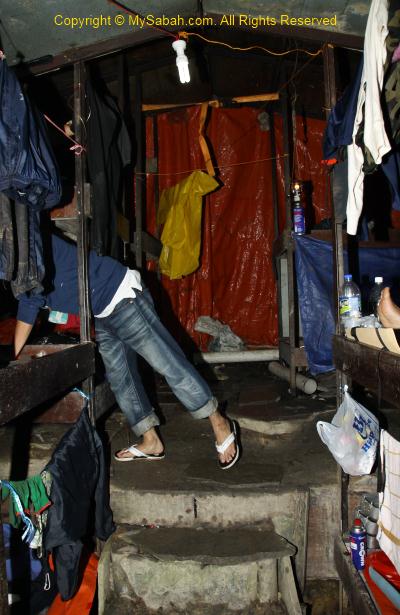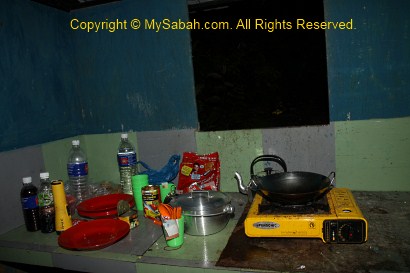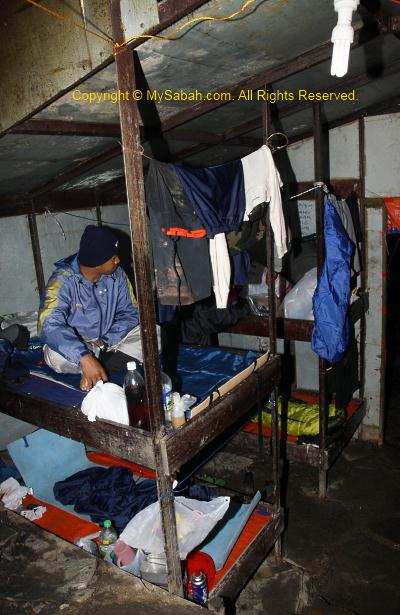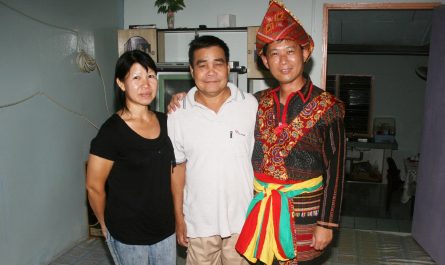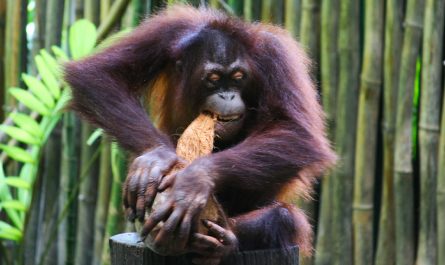Continued from Part 1… (Note: The trail & accommodation have improved a lot after 2014. Please check out my latest Guide on Climbing Mt. Trusmadi.)
Start Climbing
After a group photo at the Starting Point, we started to climb at 10:30am. It was about 26° Celsius and the air was misty and refreshing. It was mainly uphill trail but not very steep. Thick layer of green moss blanket is everywhere on the floor (survival tip: you can lick the water on the wet moss blanket as the last resort, if you run out of water).
>> Click Here to see more photos of Mt. Trus Madi
Summit Trail
We began our climb in a hill mixed dipterocarp forest, characterized by closed-canopy forest with taller trees. Due to the moist environment, you can see many lichens, liverwort and algae plant. The hill forest is dominated mainly by dipterocarp of genus Shorea, and understorey plants dominated by Rubiaceae with 16 species.
>> Click Here to see more photos of Mt. Trus Madi
The dim and humid environment also promotes the growth of mushroom and fungus. We saw many of them in different colours and size along the trail. The most special one is the blue mushroom, which is only found in Mt. Trus Madi. Unlike the summit trail of Mt. Kinabalu, the trail is heavily foliaged and we are surrounded by dense vegetation most of the time. The nature trail is narrow, no boardwalk and hand rail, and a lot of overhanging trees and entangled roots. You have to watch your head and steps carefully.
>> Click Here to see more photos of Mt. Trus Madi
Lower Montane Forest
The lower slopes represent a transition zone where dipterocarp species mixed freely with hill non-dipterocarp species. This gradually gives way to lower montane forest vegetation between 1,500 and 2,000 M asl, which is dominated by tree species belonging to families of Fagaceae and Lauraceae, and also the altitude where two species of rafflesia are found (rafflesia tengku adlinii & keithii). More standing trees are densely covered with epiphytic mosses. We saw some orchids (Eria, Dendrochilim, etc.). The flowering season of orchid is from November to December, so we did not see many orchid flowers. Nepenthes tentaculata (small pitcher plant) is quite common here.
>> Click Here to see more photos of Mt. Trus Madi
As we moved up, the decreasing number (remaining distance to summit in Meters) on signage motivated us. I also stopped frequently to photograph the interesting plant, most looked new to me. There are two resting huts on the way, one after 1 KM, and another one after 2 KM. You can use the small toilet next to the hut. Water tanks filled with river water are available at the huts if you want to refill your bottle. The water is uncooked but taste really sweet, cold and fresh!
>> Click Here to see more photos of Mt. Trus Madi
When we had our pack lunch at second hut, we were saying that the first 2 KM was not that challenging and thought that it would be the same later. We were wrong. The last 1.4 KM of trail after second hut was where the nightmare began. The trail was getting steep and required the use of fixed ropes. Then it rained on and off, turning the trail into muddy and slippery path. Luckily, for the first day, we only needed to reach the cabin (1.5 KM away from summit) to stay a night.
>> Click Here to see more photos of Mt. Trus Madi
We spotted some friendly and colourful birds. One of them is Mountain Black-eye, which is endemic to montane zone 1,800 M above sea level. Some of them were probably Kinabalu Friendly Warblers. The guide said if we sat still for a while, many curious birds would come near us.
Multi-Peak Challenge
What makes Mt. Trus Madi so tough is its “multi-peak” terrain. To reach the summit of Mt. Trus Madi, there are at least 3 peaks you can’t avoid, namely, Taman Bunga (Flower Garden) Peak, Taliban Peak (which is named after the first Native Chief in Tambunan and has nothing to do with terrorist) and Trus Madi Peak. Slopes become steeper closer to the peaks. When you climb to the top of a peak, you will see another peak in front, you conquer it, then you will see another peak in front again. Taliban Peak is slightly lower than the highest Trus Madi Peak, so someone call it a “faked summit”. There are many ascending as well as descending trail. The descending is not easier than ascending.
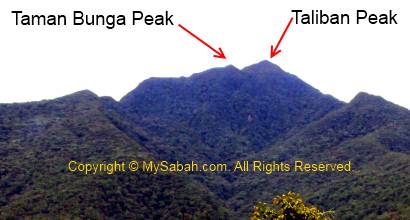
Above: the peaks of Mt. Trus Madi. The highest peak is not visible from this side.
>> Click Here to see more photos of Mt. Trus Madi
The guide also showed us some old trails to Mt. Trus Madi. They looked so narrow, steep and dangerous. The old trail has a few narrow ridge walk with deep drop at both sides. If you slip, nobody will see where you are (no kidding).
The Taman Bunga (Flower Garden) Peak
Though I sound like being tortured, I have a lot of fun in fact. 500M before the cabin (at 2,000M signage), you will enter Taman Bunga Peak, which means Flower Garden. It is an Upper Montane zone about 2,300M asl and a natural garden full of flora. This is one of the few places where you can see the rare pitcher plant, Nepenthes lowii, everywhere. Kinabalu Park was used to have a lot of lowii but most of them were killed by a prolong drought in late 90.
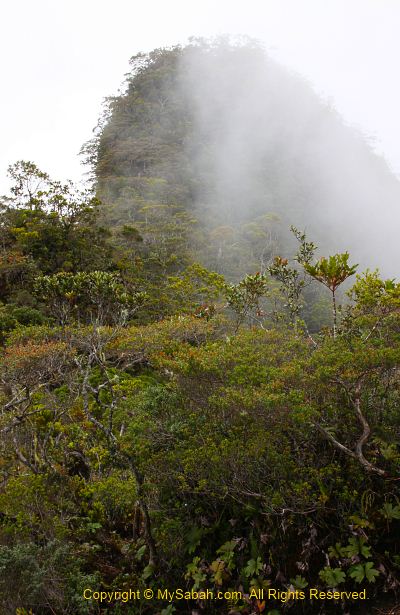
Above: Taman Bunga Peak in mist
>> Click Here to see more photos of Mt. Trus Madi
The showiest flower is the bell-shaped rhododendron flower. Wild orchid is easy to find here. Lichen, which is a composite organism of a fungus and a green alga, is abundant around, an evident of zero pollution. I also found many other interesting plants that I’ve never seen. According to the guide, there are different flowering seasons, so you would see different things in every few months.
>> Click Here to see more photos of Mt. Trus Madi
Our cabin is only 500 Meters away from Taman Bunga Peak. As the rain was getting heavier and the day was turning dark, I speed up my walk and reached the cabin by 6pm. Normal people would reach the cabin latest by 5pm. I was slow because I stopped many times to take photos.
The Cabin
We would spend a night in the cabin in first day. The cabin is built at 2,400 Meters above sea level in year 2008, and the summit is only 1.5 KM away. There are about 7 bunk beds (14 beds) in the cabin. The beds have no mattress and blanket, so you must bring your own sleeping bag. On the bed is a layer of canvas with a zinc plate underneath. Even a bit of movement on the bed will create loud noise, like you are sleeping on a zinc roof, very annoying.
>> Click Here to see more photos of Mt. Trus Madi
Though this cabin looks more like a refugee camp, it is better than nothing coz it is warmer than sleeping in camp. The bed is quite small too, even for a short guy like me. After putting my backpack and camera bag on the bed, there was not enough room for me to fully extend my legs.
Most of us were cold and wet. Our cook prepared some rice with sardine and black bean salty fish for us as dinner. Though there is a small kitchen next to the cabin, there is nothing inside. We need to carry our own cooking utensils, gas stove, plate, pot, spoon and cup ourselves. I felt better after sipping some hot coffee. There is a gravity pipe that brings river water to a tap, so I could refill my bottle with water. Trust me, the water here tastes far more better than our tap water that is full of chlorine smell. There is a toilet not far from the cabin, but none of us wanted to take a shower as the water was freezing cold.
>> Click Here to see more photos of Mt. Trus Madi
The guide burnt the mosquito coil to chase away a small and yellow flying bug called Agas. Agas is an insect that sucks your blood and leave an itchy bite mark. Another pest is the mice that running and fighting under our beds and I could hear them all night. The porter had to hang the food high, so these mice couldn’t steal it.
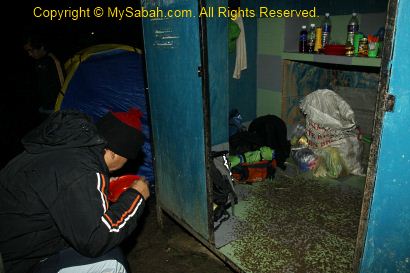
Above: kitchen next to the cabin. Behind is the camp of porters
>> Click Here to see more photos of Mt. Trus Madi
We were all exhausted and we had to wake up at 2am the next day, so we went to bed early. When I almost fell in sleep, I was splashed by cold dripping water. I checked the ceiling for water leaking but found no crack. Due to the warmer temperature in cabin, water condensation formed on the cold ceiling. For every few minutes, the water droplet dropped on my face. I tried to move my position but still could not avoid the dripping water. The strong smell of mosquito coil also choked me. So for the whole night, I laid on the bed listening to mouse fighting and heavy rain. Not only that, my bags were all wet in next day.
Photos taken in Tambunan, Sabah, Malaysia Borneo
